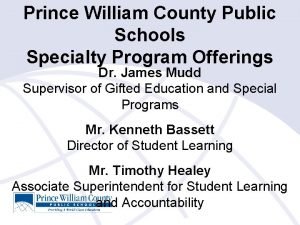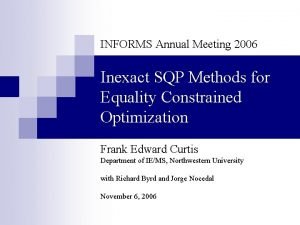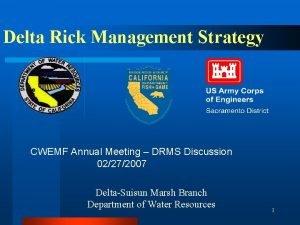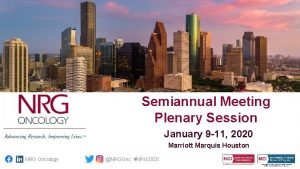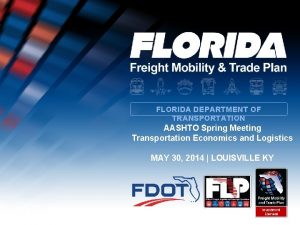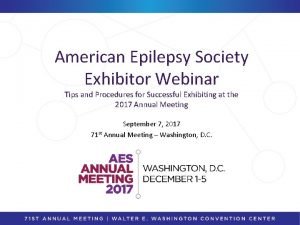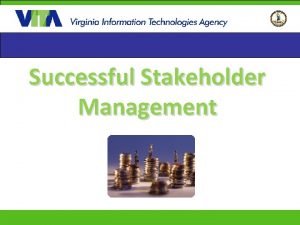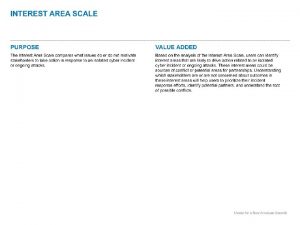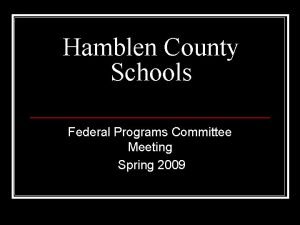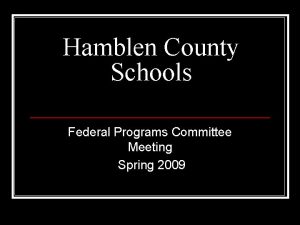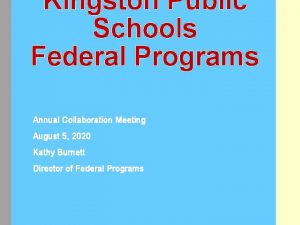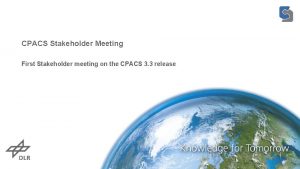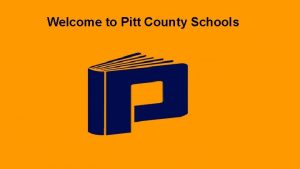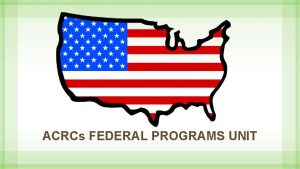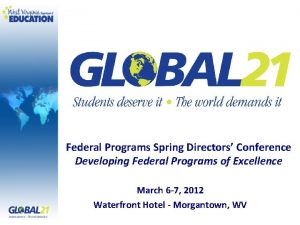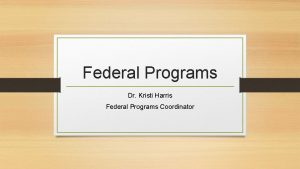Annual Federal Programs Stakeholder Meeting Perquimans County Schools













- Slides: 13

Annual Federal Programs Stakeholder Meeting Perquimans County Schools Title I, Title II and Title IV Cynthia Perry Director of Innovation and Policy

American Education Post WWII � High School Graduation rate around 20% � Schools were segregated by race � No education for students with disabilities � Large gaps in between rich and poor � Education was wholly a state and local obligation: state and counties who HAD more, could DO more � American soldiers returned from the European and Pacific theaterwith desire to finish school and pursue a higher education. � GI Bill 1944 – Higher Ed for Hon. Discharged GIs

ESEA (1965) �Part of LBJ’s “Great Society” and the “War on Poverty” �Reduce the gap: rich/poor, rural/urban �Most far-reaching federal legislation affecting education ever passed by Congress �Provides equal access to education �Shorten the achievement gaps by providing fair and equal opportunities to achieve an exceptional education.

ESEA Evolves… �Reauthorization in the 1970’s - increased regulations on how funds could be used. �School-wide option became available (1978) � additional assistance regardless of income if a school were 75% impoverished. �Established the US Department of Education in 1981 �Reauthorized again in 1988 � Raised achievement standard for low-income students � Emphasized advanced skills instead of basic ones � Increased parental involvement. � Increased student testing and regulations.

The United States: A Nation At Risk � The 1983 report of President Reagan’s National Commission on Education � A landmark event in modern American educational history � Assertion that American schools were failing � Touched off a wave of local, state, and federal reform efforts.

1994 Improving America’s Schools Act • Significantly revised the original ESEA • Coordinated federal resources and policies with state and local Added math and reading/language arts standards to be used to assess student progress and provide accountability • Reduced the poverty threshold from 75% to 50% • More local control overall so that federal officials and states could waive federal requirements that interfered with school improvements • Established AYP

2001 Reauthorization of ESEA • No Child Left Behind Act (NCLB) • Widespread support of both parties. • Increased accountability from districts, schools, teachers, and students. • Yearly standardized tests and annual report cards. • Higher accountability, adequate progress, improvement, corrective action, restructuring, changes in funding.

2015 Reauthorization: The Every Student Succeeds Act (ESSA) �Reauthorization of the original law from 1965 and replaces the 2001 reauthorization of NCLB �Narrows the federal role in dictating policy �Keeps testing requirements but shifts decisions about them to the states �Requires interventions in low performing and high achievement gap schools �Consolidates multiple federal grants and programs

Federal Programs 101 �Federal Programs are funds (grants) that are provided by the Federal government to facilitate educational initiatives in specific populations �Title I: Improving the Academic Achievement of the Disadvantaged. �Title II: Preparing, Training, and Recruiting High-Quality Teachers, Principals, And Other School Leaders. �Title IV: Student Support and Academic Enrichment (SSAE)

Title I and Family Engagement � http: //www. pqschools. org/content/pqschools/uploads/PDF/parent_in volvement/policy-13203560. pdf �Parent input on the Family Engagement policy is a required component of Title I �We value your input! � Request that you review our policy and provide recommendations for any changes you feel are needed. �Please review the policy handout and use the form to provide any suggestions!

How are Title I, II and IV funds used? �Teacher , Administrator and Principal salaries, all or part �School programs: Reading Recovery, i. Ready, Reading 3 D �Books and materials for students �Computer software and programs �Instructional specialists, tutors, interventionists �Programs to support or enrichment existing student programs, bring additional programs

How are Title I, II and IV funds used? �Social/Emotional supports for students and families �Safety and Healthy schools awareness and training �Training, conferences, professional development �Parent engagement, communications, homeless assistance �School-Community events: parent nights, Transition programs, ‘make it/take it’ events, STEM activities

How did we use Federal Funds in our district in the 2018 -19 SY? � 83% � 7. 2% � 4. 8% � 4. 6% Salaries & benefits for sub, tutors, new teacher training and supplements ($598, 740. 88) Workshop expenses, contracted services, advertising costs and field trips ($52, 069. 08) Supplies and materials, Pre K snacks, books, computer supplies ($52, 069. 08) Homeless set aside ($33, 004. 92) �Total Budget last year: $718, 313. 48
 Prince william county public schools specialty programs
Prince william county public schools specialty programs Collection of programs written to service other programs.
Collection of programs written to service other programs. Informs annual meeting
Informs annual meeting Aupha annual meeting
Aupha annual meeting American psychiatric association annual meeting 2020
American psychiatric association annual meeting 2020 Grand lodge kentucky
Grand lodge kentucky Annual theory meeting
Annual theory meeting Cwemf
Cwemf How to run an annual general meeting
How to run an annual general meeting Nrg oncology meeting 2019
Nrg oncology meeting 2019 Aashto annual meeting 2015
Aashto annual meeting 2015 Scts membership
Scts membership Nrg oncology semi annual meeting 2018
Nrg oncology semi annual meeting 2018 American epilepsy society annual meeting 2017
American epilepsy society annual meeting 2017
